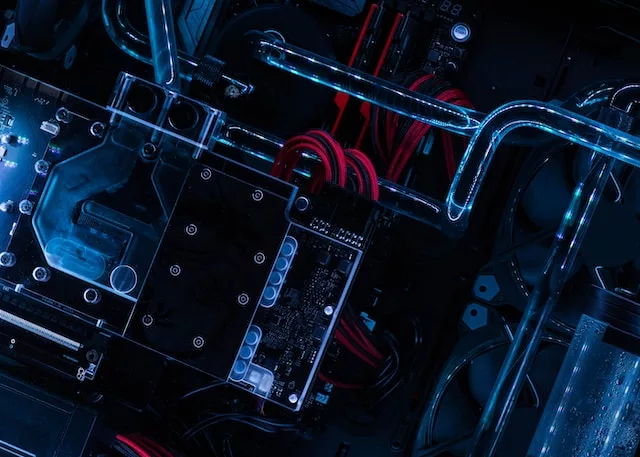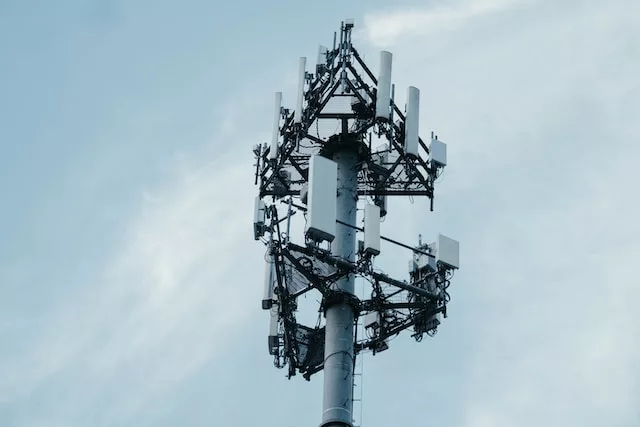In the era of 5G, where high capacity, ultra-low latency, and cost efficiency are paramount, Cloud-RAN (C-RAN) is fast emerging as a game-changer. C-RAN architecture is revolutionising 5G networks. By centralising and virtualising key functions of the Radio Access Network (RAN), C-RAN is transforming how carriers approach deploying their 5G networks.
With improved network performance, lower latency, and scalability, C-RAN empowers operators to meet the growing demands of the digital age. It’s no wonder that it’s an $11.1 billion industry, projected to expand to $85.9 billion by 2031.
Understanding Cloud-RAN architecture
Cloud-RAN (C-RAN) is a revolutionary network architecture that plays a pivotal role in the advancement of 5G technology. It involves centralising and virtualising key functionalities of the Radio Access Network (RAN). By doing so, C-RAN unlocks numerous advantages, such as improved capacity, reduced latency, and cost efficiencies.
The following are components of typical C-RAN infrastructure:
- Centralised Unit (CU): The CU hosts virtualised baseband processing functions, including control, coordination, and management of remote radio units (RRUs).
- Remote Radio Unit (RRU): RRUs are distributed at cell sites and responsible for radio frequency (RF) processing, signal transmission, and reception.
- Fronthaul: High-capacity links connecting the CU and RRUs, carrying digitised baseband signals.
C-RAN diverges from traditional RAN architectures in several ways. Firstly, the baseband processing functions are centralised in the CU rather than being distributed at individual cell sites. This consolidation allows for efficient resource utilisation and dynamic allocation.
Secondly, the separation of baseband processing from RF processing in RRUs enables optimised resource allocation and coordination across multiple cells. Lastly, C-RAN facilitates advanced interference management techniques, coordinated scheduling, and future-proof scalability. These advancements are particularly important in the context of supporting large-scale IoT (Internet of Things).

Advantages of Cloud-RAN for 5G
C-RAN’s advantages for 5G networks include enhanced network performance, lower latency, cost reduction, and scalability:
Enhanced network performance and capacity
C-RAN’s centralisation of baseband processing and resource pooling enables improved network performance and capacity. Centralised processing allows for efficient resource allocation, advanced interference management, and coordinated scheduling across multiple cells.
This optimisation of resources enhances spectral efficiency, increases network capacity, and improves overall performance in terms of throughput, coverage, and user experience.
Lower latency and faster response times
By centralising baseband processing closer to the network core, C-RAN minimises signal transmission, processing, and decision-making time. This reduction of latency in 5G networks enables ultra-responsive applications such as real-time interactive services, autonomous vehicles, and mission-critical communications, which require minimal delay.
Cost reduction and efficiency
C-RAN brings cost savings and operational efficiency through virtualisation and centralisation. It eliminates the need for dedicated hardware at each cell site, reducing capital expenditure and maintenance costs. Dynamic resource allocation optimises resource utilisation, enhancing efficiency and cost-effectiveness in network operations.
Scalability and flexibility
Adding remote radio units (RRUs) instead of deploying additional baseband units simplifies network expansion. This scalability enables efficient network growth and easy integration of new technologies and services. Furthermore, the software-driven nature of C-RAN allows for swift upgrades, enabling operators to introduce new features and functionalities quickly.
Implementing Cloud-RAN in 5G networks
While it has transformative potential, deploying C-RAN in 5G networks requires careful consideration and technical expertise to pull off. With that in mind, let’s explore the key aspects involved in deploying C-RAN in the context of 5G.
Virtualisation and software-defined networking (SDN)
Virtualisation plays a critical role in C-RAN deployment. By virtualising baseband processing functions, operators can leverage the benefits of software-defined networking (SDN) to efficiently manage and allocate resources.
SDN enables dynamic control and orchestration of the virtualised network functions, facilitating efficient resource utilisation, rapid service deployment, and network optimisation in C-RAN architectures.

Challenges and considerations
Implementing C-RAN also comes with certain challenges and considerations:
- Fronthaul Connectivity: Establishing high-capacity and low-latency fronthaul links between the centralised unit CU and RRUs is crucial.
- Power and Cooling: Concentrating baseband processing equipment at the CU site may require careful consideration of power and cooling requirements.
- Backhaul Capacity: C-RAN deployment necessitates sufficient backhaul capacity to handle the increased data traffic generated by centralised baseband processing.
- Network Synchronization: Ensuring precise timing and synchronisation between CU and RRUs is critical for maintaining reliable and coordinated operations.
- Security and Resilience: Due to centralised points of control, operators should implement stringent security protocols and redundancy strategies to protect against potential threats and minimise service disruptions.
Real-world examples and case studies:
Several operators worldwide have adopted C-RAN to enhance network performance, increase capacity, and reduce costs.
For example, China Mobile deployed C-RAN extensively during its large-scale 5G rollout, leveraging centralised processing for improved network efficiency. Similarly, SK Telecom in South Korea implemented C-RAN to optimise its 5G network and deliver enhanced services with lower latency.
The impact of C-RAN – a future perspective
The convergence of C-RAN and edge computing holds immense potential for improved network performance and efficiency.
By integrating C-RAN with edge computing capabilities, operators can distribute computing power closer to the network edge. This integration enables low-latency processing, faster response times, and efficient data offloading. Edge computing and C-RAN integration unlock possibilities for latency-sensitive applications, real-time analytics, and new edge services, ultimately enhancing the overall user experience.
C-RAN also opens the door to innovative services and applications in various industries. The combination of centralised processing, network slicing, and dynamic resource allocation allows for efficient support of diverse use cases.
From smart cities and connected vehicles to industrial automation and immersive augmented reality experiences, C-RAN empowers the deployment of advanced applications and services that demand high-performance connectivity, ultra-low latency, and reliable network capabilities.
As C-RAN continues to evolve, its integration with emerging technologies and its ability to support diverse applications and services will shape the future of connectivity. By leveraging C-RAN’s potential, network operators can drive innovation, unlock new revenue streams, and deliver transformative experiences for businesses and end-users alike.
Conclusion
As networks continue to evolve, C-RAN provides a flexible and scalable architecture that can adapt to changing requirements. Its centralised and virtualised nature allows for efficient resource allocation and dynamic network management, facilitating the integration of emerging technologies such as 5G, network slicing, artificial intelligence, and machine learning.
C-RAN’s ability to optimise network performance and capacity positions it as a key enabler for the evolving network landscape.
However, C-RAN is still an inherently complex technology. To ensure an effective rollout, one must develop a deep understanding of its function, the challenges it poses, and real-life success stories.







